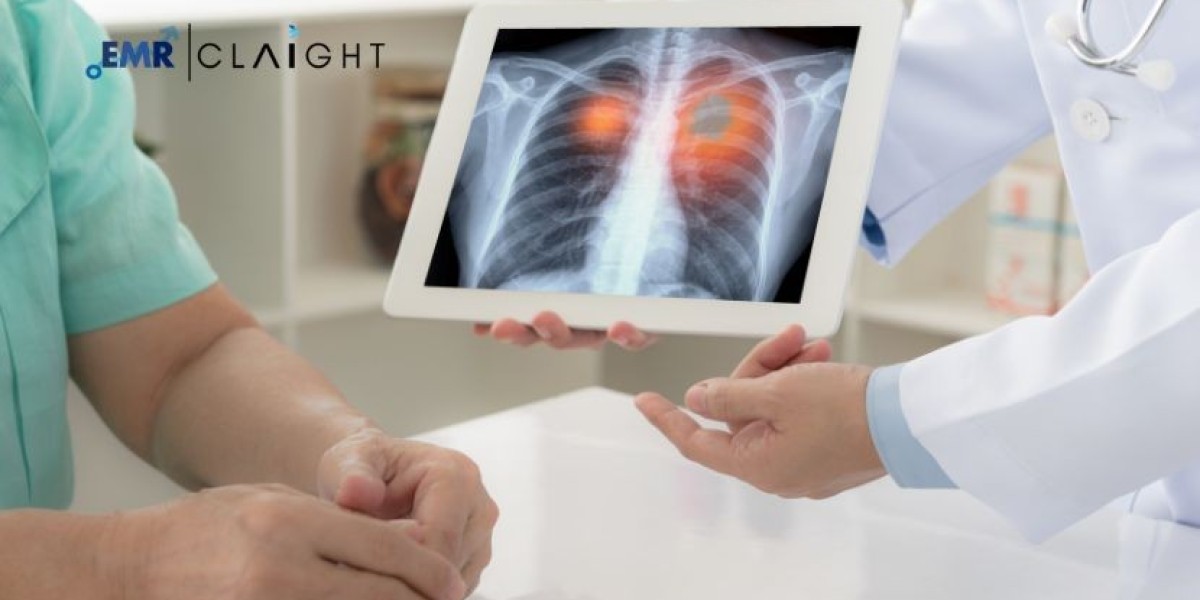Cancer Screening Market Overview
The global cancer screening market is experiencing significant growth due to the increasing prevalence of cancer worldwide and continuous advancements in cancer screening technologies. Cancer screening refers to the process of testing individuals for cancer before they show symptoms to detect the disease at an early stage, often improving the prognosis and survival rates. As the incidence of cancer continues to rise globally, early detection remains a critical strategy to improve patient outcomes. Advances in non-invasive screening methods, such as liquid biopsy, and more affordable, accessible testing methods are also helping to drive the market forward. With increasing awareness about the benefits of early detection and diagnosis, the demand for cancer screening services is expanding rapidly.
Market Size and Share
The cancer screening market is expected to grow at a robust compound annual growth rate (CAGR) of 6.00% during the forecast period from 2025 to 2034. In 2024, the global market for cancer screening was valued at USD 27.2 billion, and it is projected to reach a value of approximately USD 49.8 billion by 2034. This growth is largely attributed to the rising number of cancer cases, aging populations, technological advancements in diagnostic methods, and the increasing adoption of personalized medicine. A significant part of this growth will also come from innovations in early screening tools that provide non-invasive, accurate, and cost-effective results.
Market Trends
- Technological Advancements in Screening Methods
Technological advancements in cancer screening technologies are transforming the market. Innovations like liquid biopsy, digital mammography, and AI-based diagnostic tools are enabling earlier and more accurate cancer detection. Liquid biopsy, for instance, provides a non-invasive method for detecting genetic mutations and monitoring cancer progression, helping to reduce the need for painful and costly procedures. AI-based screening tools are further improving the efficiency and accuracy of diagnosing cancers, particularly breast and lung cancer. - Focus on Early Cancer Detection
There is an increasing global focus on early cancer detection, driven by the benefits of detecting cancers at earlier stages, when they are more treatable. Screening programs for various cancers, such as breast, prostate, and colorectal cancers, are becoming more common as the medical community emphasizes preventive care. Early detection not only improves survival rates but also reduces the treatment burden, lowering overall healthcare costs. Increased screening awareness is playing a crucial role in this trend, encouraging more individuals to undergo regular check-ups. - Integration of AI and Machine Learning in Screening
Artificial intelligence (AI) and machine learning (ML) are increasingly being incorporated into cancer screening tools to enhance accuracy and precision. AI-powered diagnostic tools can analyze large datasets quickly and identify patterns that may be missed by human practitioners. These technologies are particularly valuable in imaging-based screening, such as mammography and CT scans, where they can help detect early signs of cancer. As AI and ML continue to evolve, their integration in cancer screening is expected to improve diagnostic outcomes significantly. - Growing Awareness and Access to Screening Programs
Global initiatives to raise awareness about cancer and the importance of early screening are driving the market forward. With healthcare organizations and governments around the world investing in cancer awareness campaigns, there is a higher demand for screening services. Additionally, increased access to screening programs, particularly in developing regions, is contributing to the growth of the cancer screening market. Public health programs and partnerships with organizations like the World Health Organization (WHO) have made screening more accessible, especially for high-risk populations.
Market Analysis
- Product Segmentation: Instruments, Consumables, and Services
The cancer screening market can be segmented into three major categories: instruments, consumables, and services. Instruments include diagnostic machines such as mammography units, CT scanners, and endoscopy devices, which are essential in cancer detection. Consumables, such as reagents and test kits, support the screening process and are vital in obtaining accurate results. Services, including laboratory analysis and physician consultations, are integral to the screening process, making this segment a critical revenue generator. - Application Segmentation: Types of Cancer
The cancer screening market is segmented by the types of cancer it addresses, with significant focus on breast cancer, colorectal cancer, lung cancer, prostate cancer, cervical cancer, and others. Among these, breast and colorectal cancer screenings are the most widely used, owing to their high incidence and effectiveness of early detection. Prostate cancer screening, driven by PSA testing, is also growing, while lung cancer screenings are gaining importance due to increased awareness and smoking-related risks. - End User Segmentation: Hospitals, Clinics, and Diagnostic Labs
The key end users in the cancer screening market include hospitals, specialty clinics, diagnostic labs, and cancer institutes. Hospitals remain the dominant end user due to the availability of comprehensive diagnostic equipment and skilled healthcare professionals. Specialty clinics and diagnostic labs are also significant players in this market, offering focused screening services with more personalized care. Cancer institutes provide specialized screenings for specific cancer types, contributing to the overall growth of the market. - Regional Insights: Variations in Cancer Screening Access
Regional disparities in access to cancer screening services play a significant role in the global market. In North America and Europe, high rates of screening participation are observed, supported by well-established healthcare systems. Conversely, regions like Asia-Pacific and Latin America are witnessing growing demand for cancer screening services, but access and awareness remain barriers in some areas. The increasing adoption of screening programs in these regions is expected to drive the market in the coming years, as governments invest in public health infrastructure.
Scope of the Report
This report provides an in-depth analysis of the cancer screening market, including historical trends, market forecasts, and a detailed breakdown by product type, application, end user, and region. It highlights the key market drivers, challenges, and opportunities within the market, as well as profiles of the leading players. The report offers comprehensive insights into the market’s competitive landscape, key strategies adopted by market leaders, and future growth prospects.
Regional Insights
- North America Market Insights
North America holds a dominant share of the global cancer screening market due to advanced healthcare infrastructure, higher awareness of the importance of early cancer detection, and widespread access to screening services. The United States, in particular, has robust cancer screening programs, with initiatives for breast, colorectal, and prostate cancer screenings that are backed by government funding and private healthcare systems. High investments in medical technology and AI-driven diagnostic tools are further boosting the market in this region. - Asia Pacific Market Insights
The Asia Pacific region is expected to experience significant growth in the cancer screening market during the forecast period. With a rapidly aging population and rising cancer incidence, there is an increasing need for accessible and affordable screening services. The growing healthcare infrastructure in countries like China, India, and Japan, along with government initiatives promoting cancer awareness, is driving market growth. However, the challenge remains in addressing disparities in screening access, especially in rural areas of these countries.
Market Growth
The growth of the cancer screening market is driven by several key factors, including technological advancements in diagnostic tools, increased awareness of the benefits of early cancer detection, and the rising global burden of cancer. Innovations like liquid biopsy and AI-based diagnostic tools are making cancer screening more efficient, non-invasive, and accurate. Additionally, increasing government and public health initiatives to expand screening access in developing regions present significant opportunities for market growth.
Get a Free Sample Report with a Table of Contents
Recent Developments & Challenges
- Technological Innovations in Cancer Screening
The market is witnessing innovations in cancer screening technologies, including the development of liquid biopsy tests that can detect cancer markers in blood samples. This non-invasive method offers a promising alternative to traditional biopsy and is gaining popularity in detecting various cancers, including lung and colorectal cancers. - Regulatory Challenges in Cancer Screening
The cancer screening market faces regulatory challenges, especially concerning the approval and reimbursement of new screening technologies. For instance, regulatory bodies like the FDA have stringent requirements for approving new cancer screening devices and tests, which can delay market entry for innovative products. - High Screening Costs
Despite advancements in technology, the cost of cancer screening remains a challenge, especially in low- and middle-income countries. High screening costs can limit access to essential services, particularly in regions where healthcare budgets are limited. - Awareness and Participation Rates
While awareness of the importance of cancer screening is rising, participation rates remain low in certain populations. Overcoming barriers such as lack of education, accessibility issues, and cultural resistance to screening will be essential to ensure broader adoption of these life-saving services.
Key Players
DiaSorin S.p.A.: DiaSorin S.p.A. is a prominent player in the cancer screening market, known for its diagnostic solutions in the field of molecular biology and immunodiagnostics. The company offers a wide range of screening tests for various cancers, including assays for colorectal cancer, breast cancer, and prostate cancer. Their diagnostic instruments and test kits are widely used by healthcare providers to detect early signs of cancer.
Biodesix: Biodesix is a leader in precision diagnostics, specializing in blood-based tests for cancer screening and monitoring. Their innovative tests, such as the VeriStrat test for lung cancer, provide valuable insights into the molecular profile of tumors. Biodesix is at the forefront of developing non-invasive, blood-based screening methods to detect cancer early, enhancing patient care and treatment decisions.
MedGenome Labs Ltd.: MedGenome Labs Ltd. is a key player in the cancer screening market, offering genetic testing and genomic profiling services to detect various types of cancers. The company’s focus on personalized medicine and next-generation sequencing technologies has positioned it as a leader in the early detection and diagnosis of cancers in emerging markets, particularly in India.
20/20 GeneSystems: 20/20 GeneSystems specializes in the development of advanced cancer detection tests using molecular biomarkers. Their flagship product, the 20/20 Cancer Test, is a blood-based screening tool for the early detection of multiple cancers. The company is committed to improving the accuracy and accessibility of cancer screening through innovative and non-invasive diagnostic technologies.
Other companies in the cancer screening market include Abbott, F. Hoffmann-La Roche Ltd, Thermo Fisher Scientific, Inc., GE Healthcare, QIAGEN, and Koninklijke Philips N.V.
FAQs
What is cancer screening?
Cancer screening is a medical process that tests individuals for cancer before they show symptoms to detect the disease early, often leading to better treatment outcomes.
How does liquid biopsy work in cancer screening?
Liquid biopsy is a non-invasive test that detects cancer-related genetic mutations and biomarkers in blood samples, helping to identify cancer early.
What cancers are commonly screened for?
Commonly screened cancers include breast, colorectal, lung, prostate, and cervical cancers, depending on age, gender, and risk factors.
Is cancer screening covered by insurance?
In many countries, cancer screenings such as mammograms and colonoscopies are covered by insurance, though coverage may vary by region and policy.







